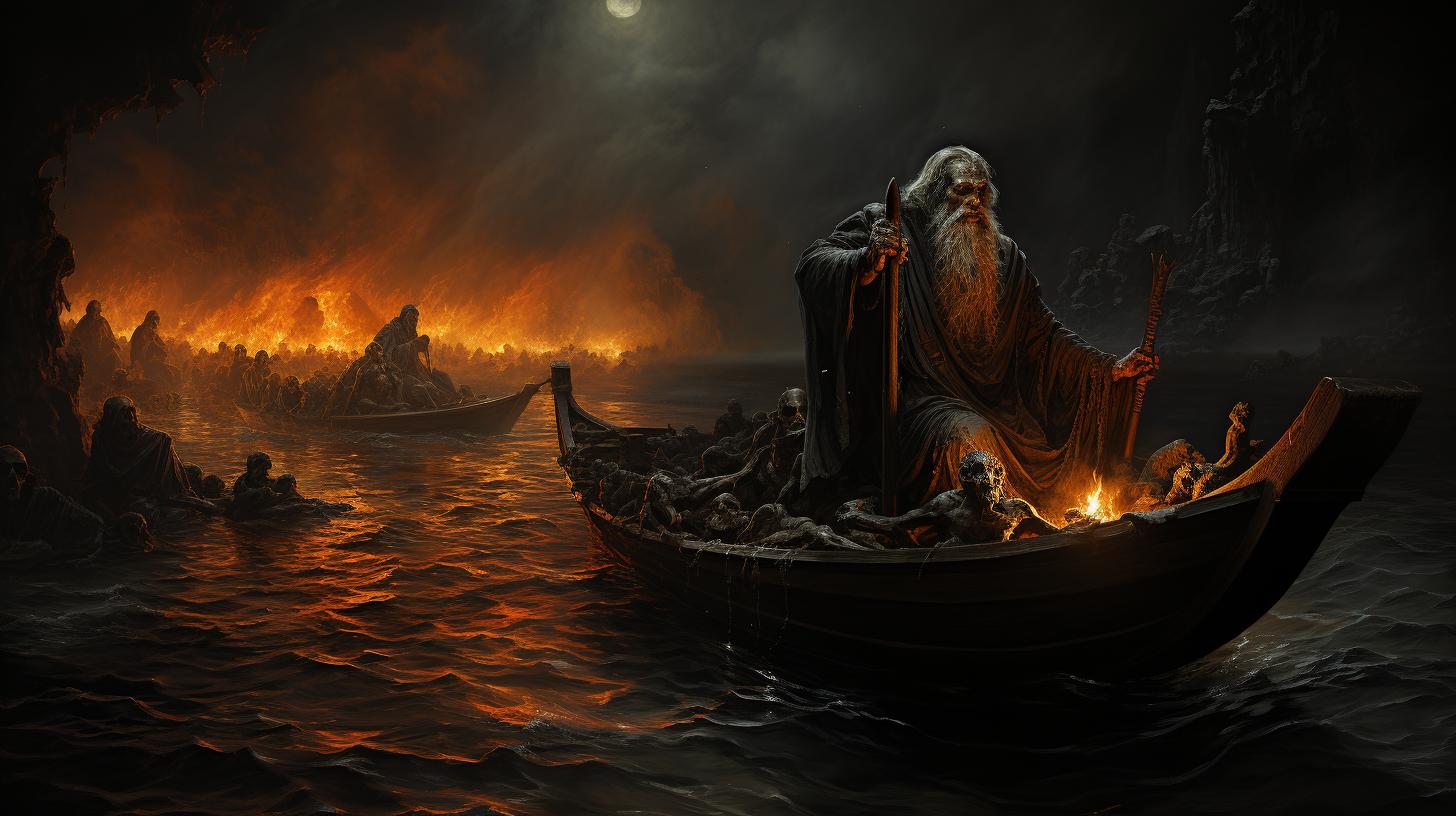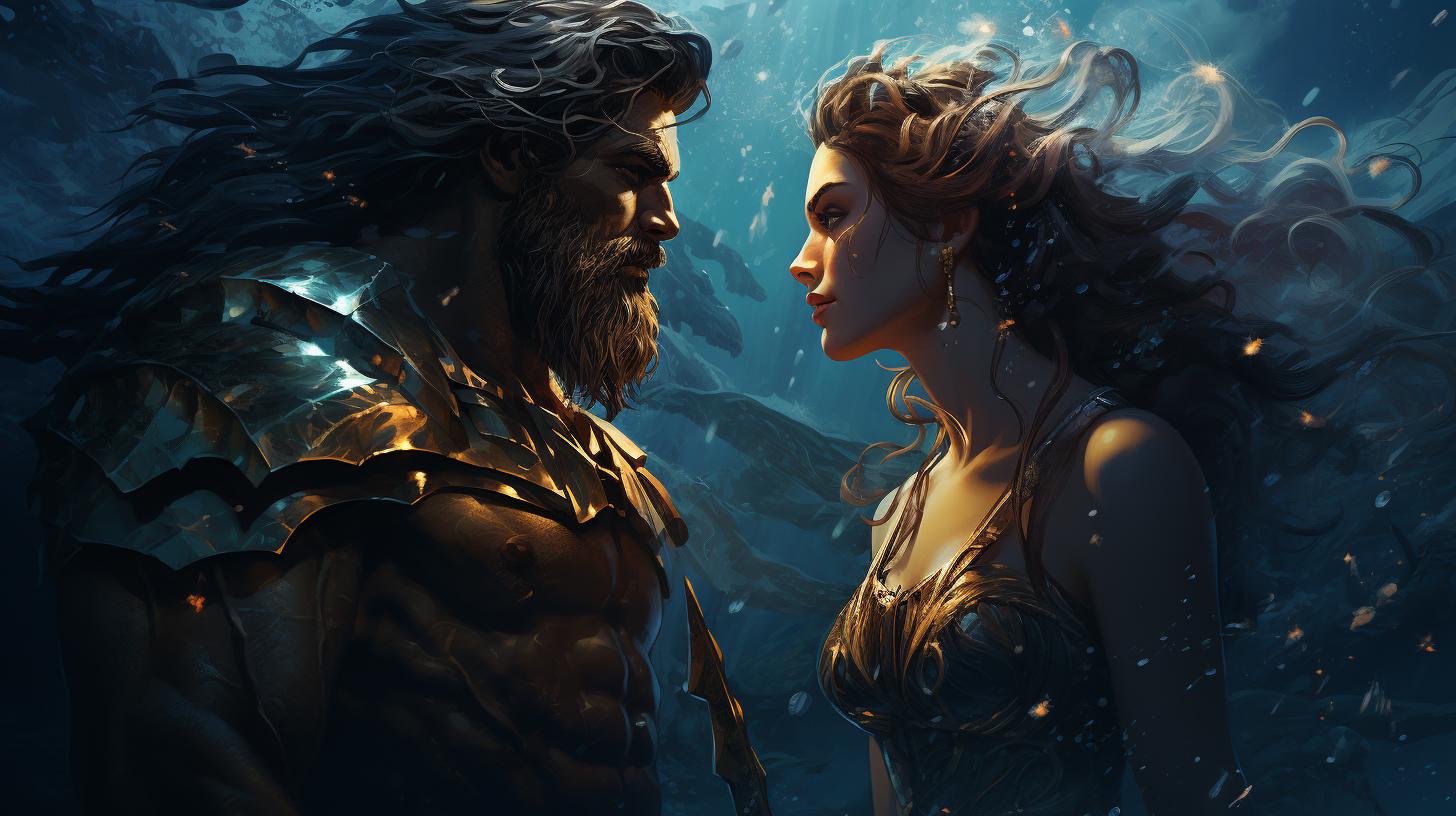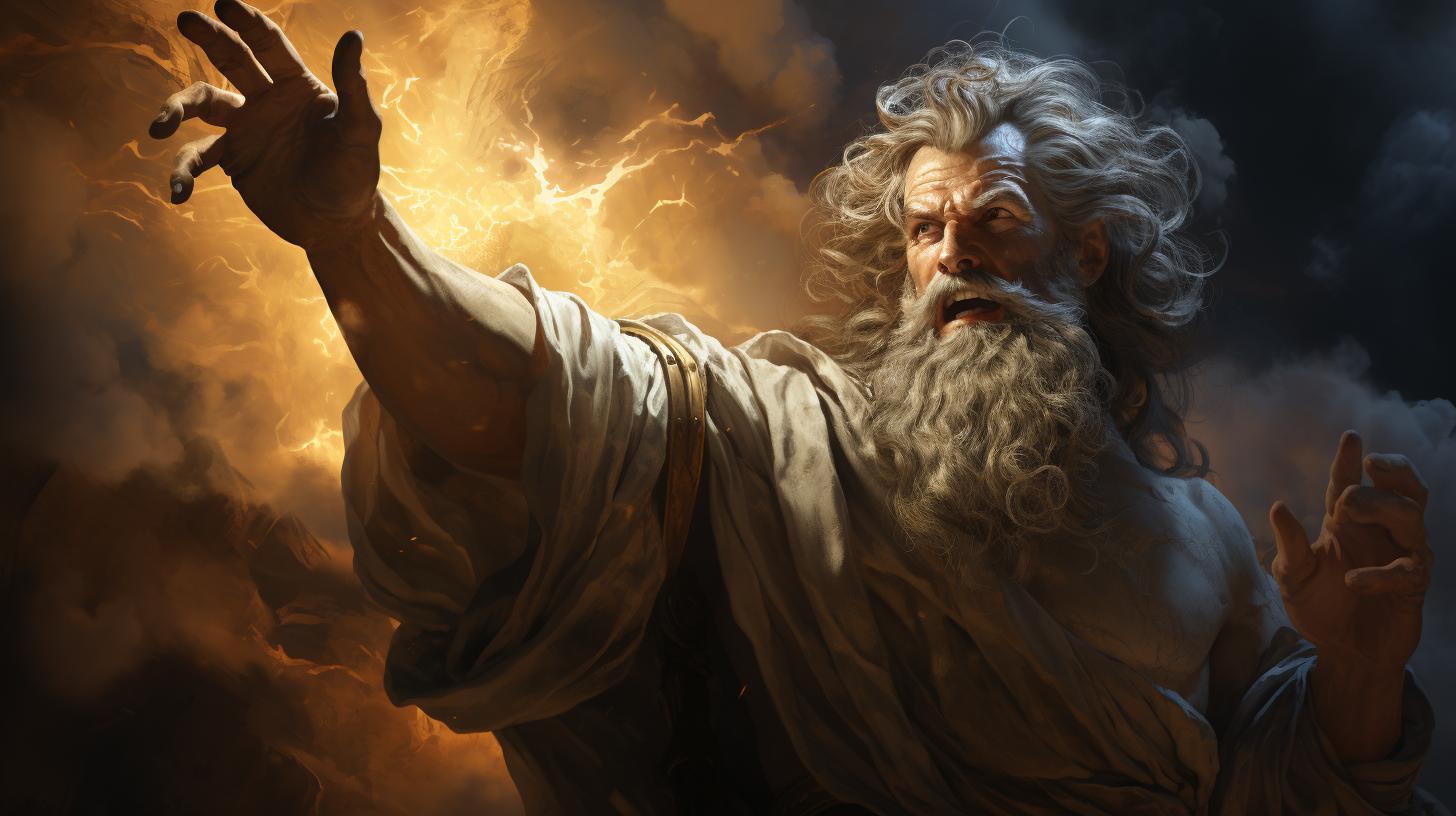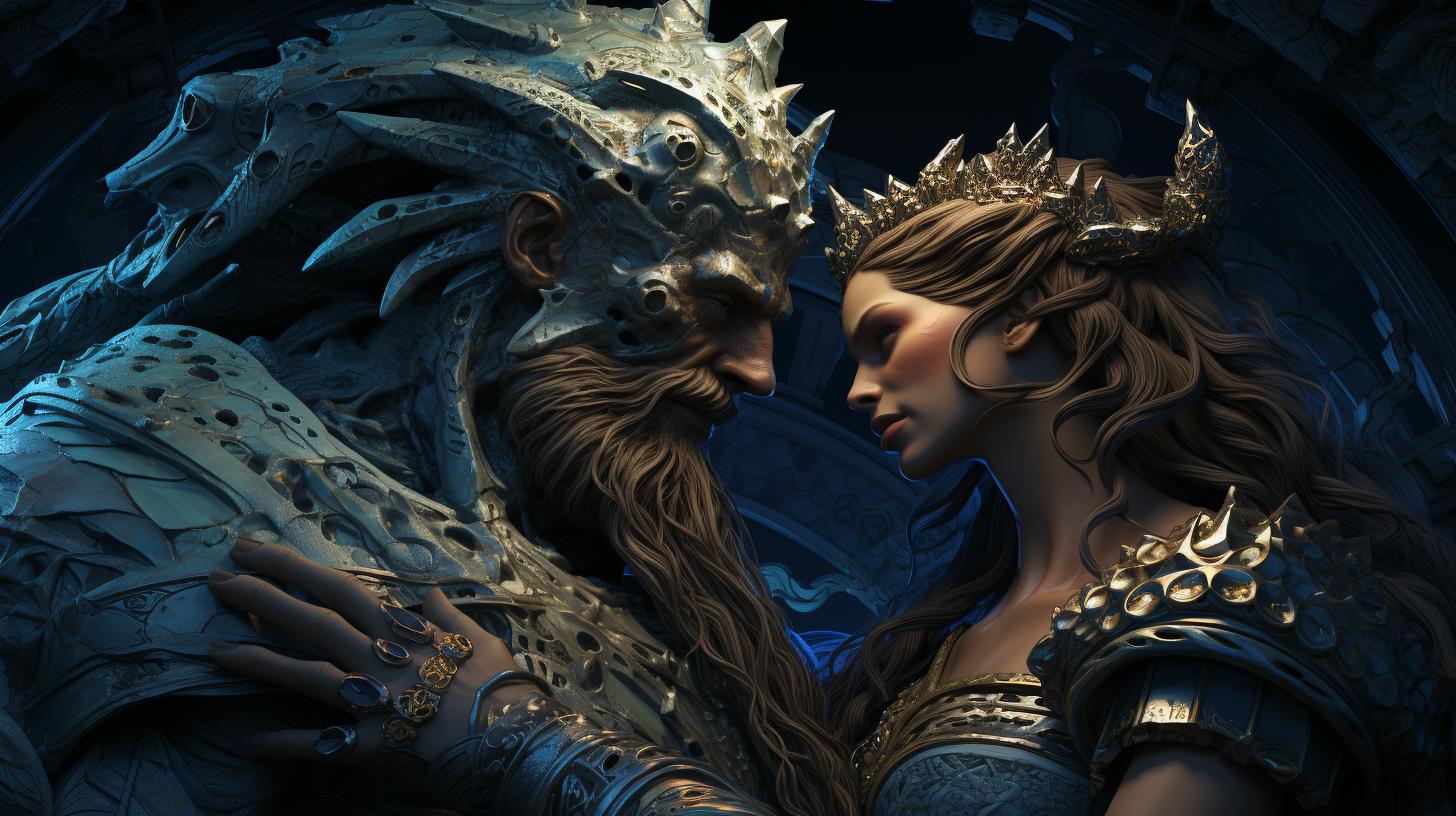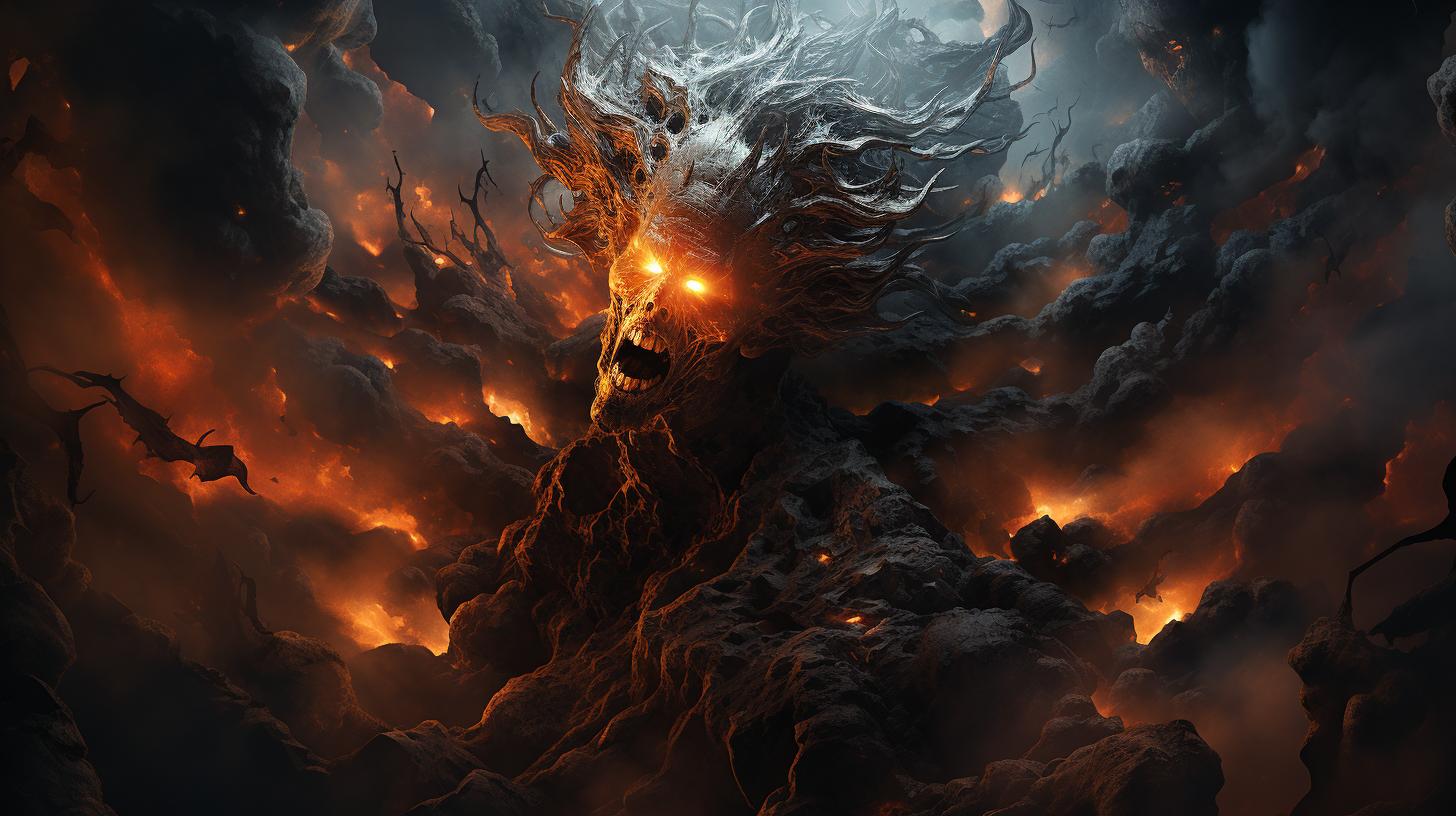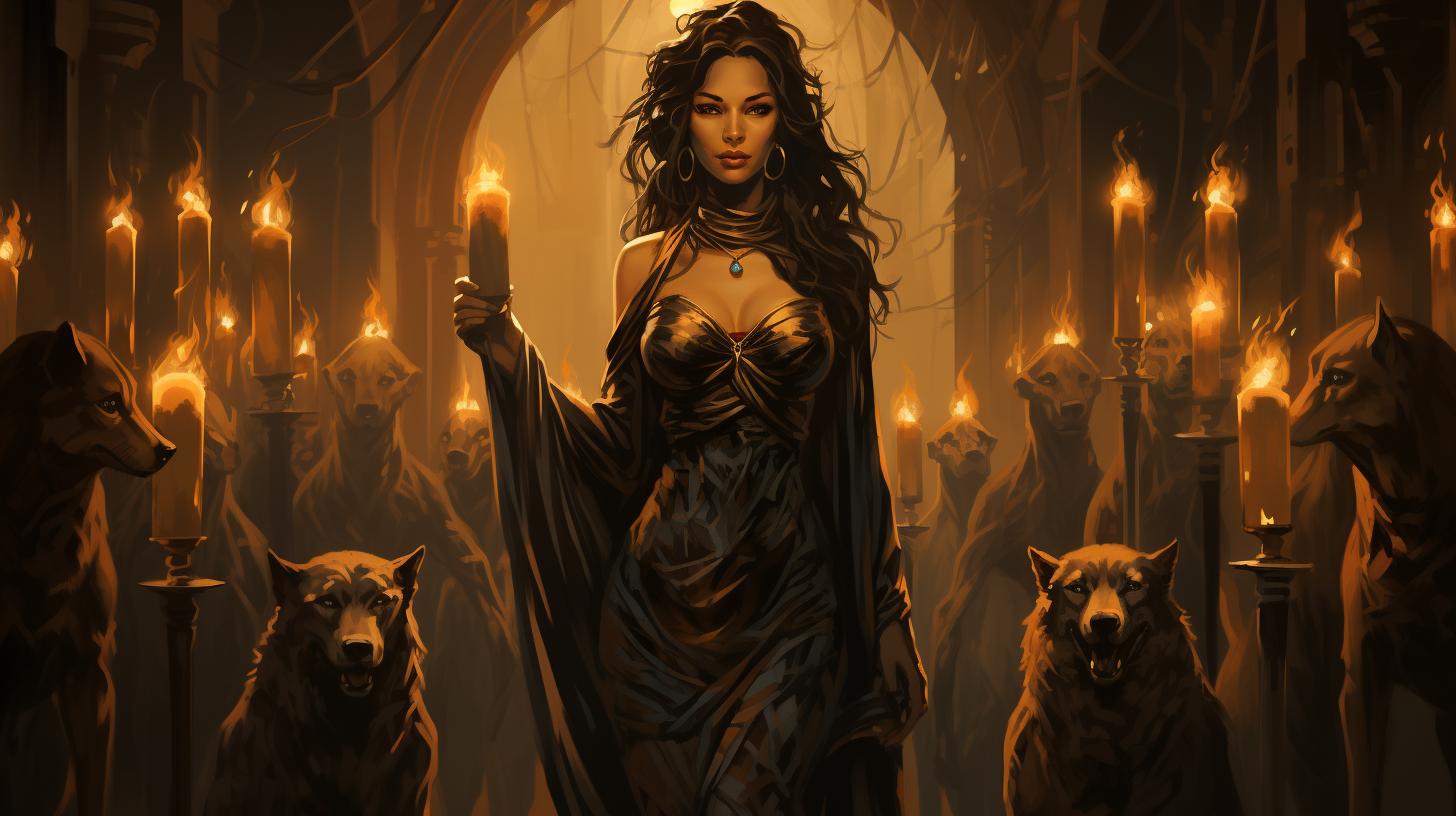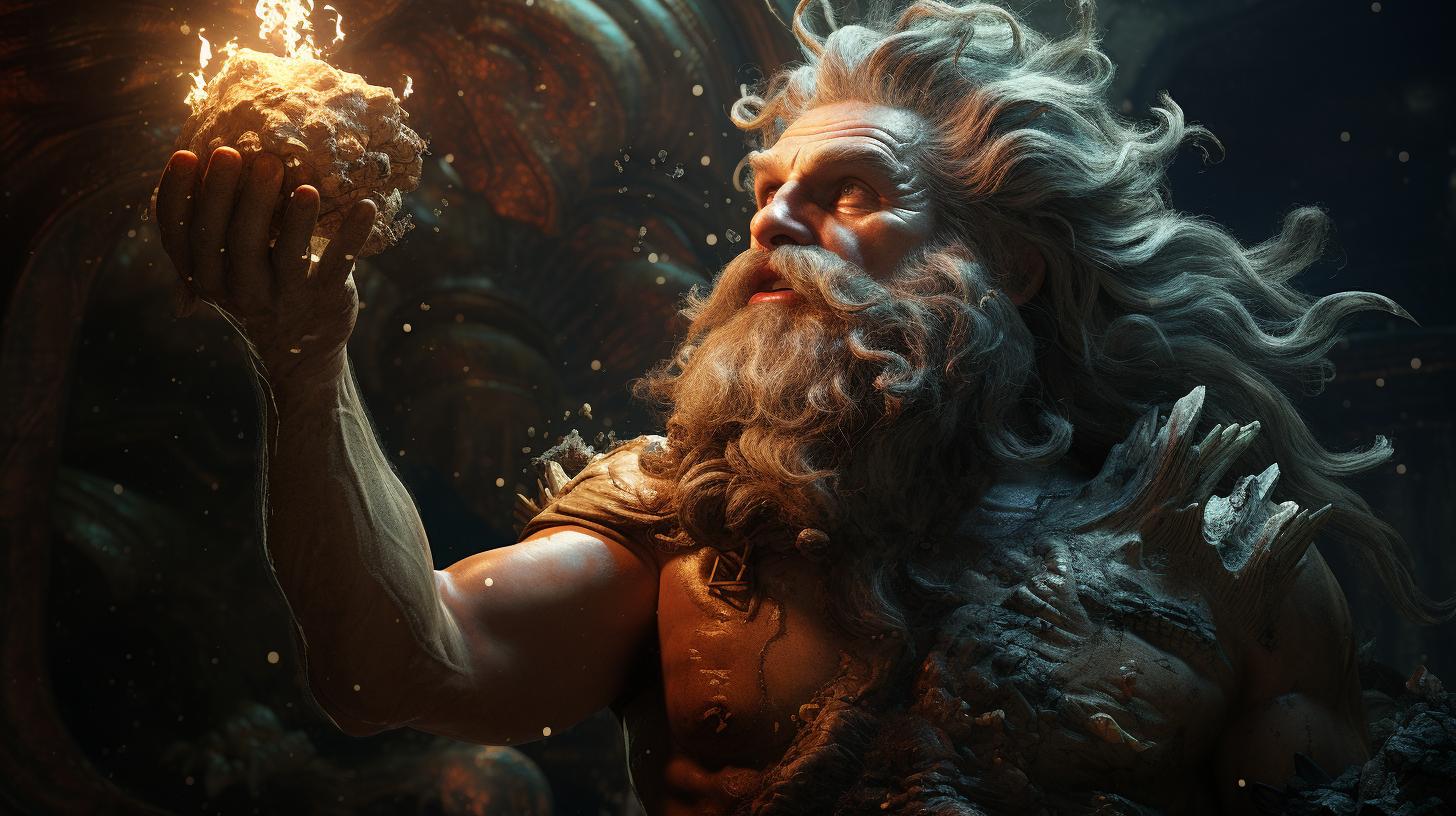What is Charon the god of: Guide to the Underworld Ferryman
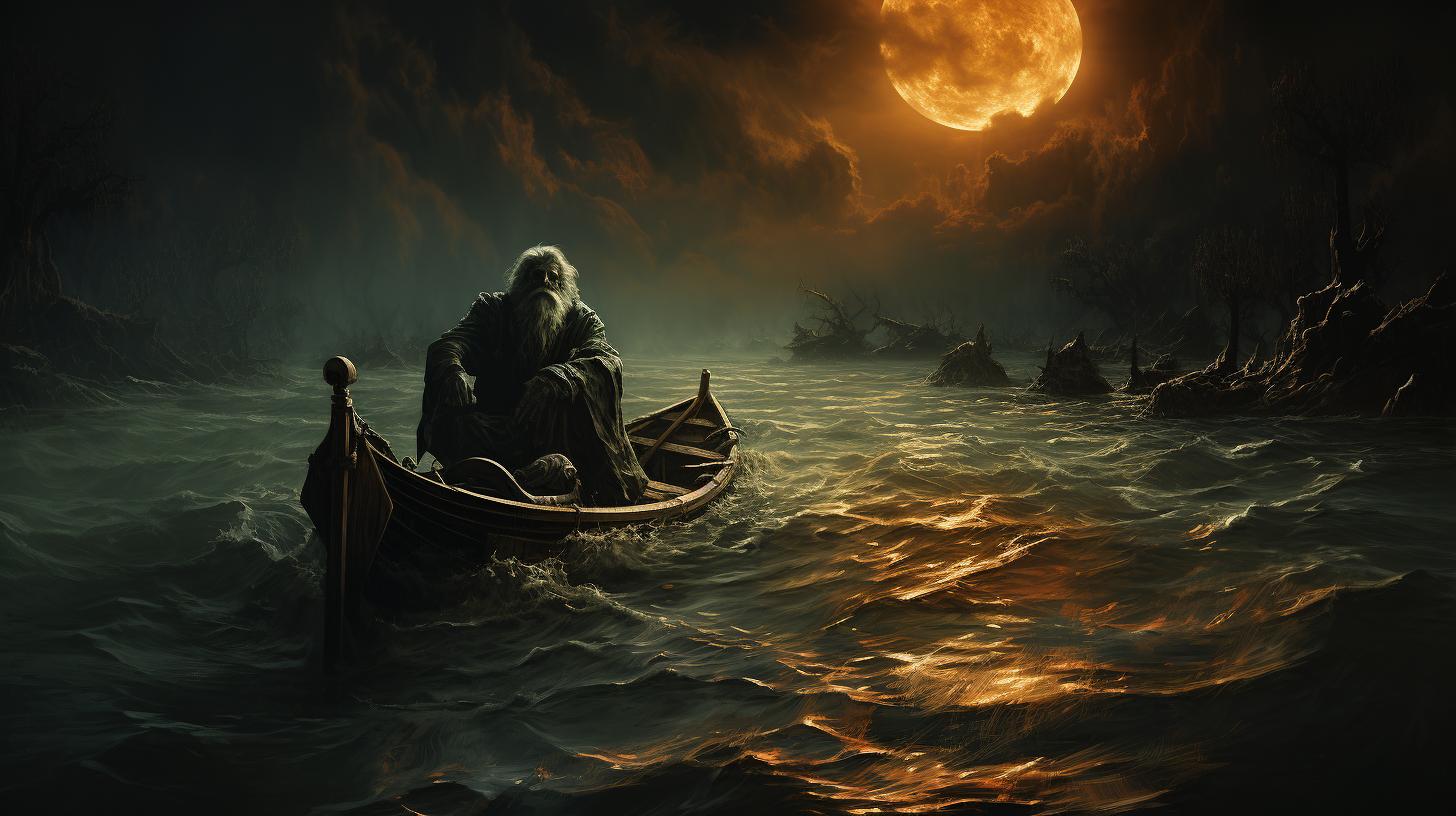
Charon, the god of the Underworld in Greek mythology, holds a prominent role as the ferryman guiding souls to the afterlife. As the son of Erebus and Night, Charon collects the obolus as payment from the deceased, ensuring their safe passage across the rivers Acheron and Styx.
The river Styx, known as the river of oaths, holds a significant connection to Charon’s role. Depicted in various arts and literature, Charon’s existence and symbolism continue to influence modern culture in astronomy, paleontology, and contemporary works.
Explore the origins, myths, and significance of Charon in Greek culture and beyond.
The Origins and Family of Charon
Charon, the enigmatic figure of Greek mythology, finds his origins in the union of Erebus and Night. As the offspring of these ancient deities, Charon assumes his role as the ferryman of the Underworld, guiding souls to their eternal rest with stoic determination.
In Greek mythology, family lineage often plays a significant role in shaping a deity’s identity, and Charon is no exception. As the son of Erebus and Night, he is connected to the primordial forces of darkness and shadow.
This lineage instills in Charon a sense of mystery and an intimate connection to the realm of the dead.
While Charon’s family background may be shrouded in darkness, his role as a ferryman has been well-documented throughout Greek mythology.
As the primary means of transportation for souls crossing into the Underworld, Charon’s presence is essential to the orderly passage of the deceased.
Charon’s family connections, although explored to a lesser extent, provide valuable insights into his origins and the rich mythology surrounding him.
Understanding Charon’s lineage lends depth and meaning to his portrayal as the guardian of the souls who venture into the realm of Hades. It is through this familial context that Charon assumes his rightful place as an integral figure in Greek mythology and the intricate tapestry of the afterlife.
The Role of Charon as the Ferryman of the Underworld
In Greek mythology, Charon assumes the crucial role of ferrying the souls of the deceased across the rivers of the Underworld. This section delves into the various aspects of Charon’s role, including guiding the souls to the Underworld, the payment of obolus for passage, and the depictions of Charon in art and literature.
Guiding the Souls to the Underworld
Charon, known as a psychopomp, is responsible for guiding the souls from the realm of the living to the realm of the dead. Upon their arrival at the banks of the Acheron or Styx rivers, Charon would transport the souls across the waters to Hades, their final destination.
This journey symbolizes the transition between life and death, ensuring that the souls reach their next phase of existence.
The Payment of Obolus and the Consequences for Those who Couldn’t Pay
A significant aspect of Charon’s role is the requirement of an obolus, a small coin, as payment for his service. The souls must pay Charon to secure passage to the Underworld.
Those unable to pay the fee faced a haunting fate, condemned to wander the shores of the river as restless spirits, unable to find peace in the afterlife. This emphasizes the importance of fulfilling one’s obligations and the consequences of not doing so, even in death.
Depictions of Charon in Art and Literature
Charon’s portrayal in ancient art and literature offers intriguing insights into his appearance and characteristics. In Greek artworks, Charon is often depicted standing in his boat, holding a pole to receive the souls.
He is described as a disheveled, bearded man with a twisted nose, wearing a conical hat and tunic. In Etruscan mythology, he takes on a more grotesque form, with grayish-blue skin, fangs, and sometimes serpents adorning his arms.
These diverse representations reflect the imaginative interpretations of various artists and cultures throughout history.
Charon and the River Styx
Charon, the ferryman of the Underworld, is closely associated with the infamous River Styx. This section explores the significance of Styx as the river of oaths and its deep connection to Charon.
Styx as the River of Oaths and the Connection to Charon
The River Styx holds immense importance in Greek mythology as it serves as the sacred river upon which gods and goddesses would swear their most solemn oaths. It is through this connection that Charon, as the ferryman of the Underworld, gains prominence.
In ancient Greek belief, the gods would often call upon the power of the River Styx to bind their promises and ensure their unbreakable nature. The river’s mystical waters were believed to possess the ability to force any oathbreaker to face severe consequences.
Charon’s association with the River Styx stems from his role as the guide to the afterlife. The souls of the deceased would have to cross the Styx to reach the realm of Hades, and Charon was the one who facilitated this journey.
The Mythological Significance of the Styx River
The Styx River holds a significant position in Greek mythology beyond its role as the river of oaths. It is often depicted as a border between the mortal realm and the Underworld, representing the transition from life to death.
According to myth, the waters of the Styx possess mystical powers, granting invulnerability to those who were immersed in them. This is notably seen in the tale of Achilles, who was dipped into the Styx by his mother Thetis, making him invincible, except for his heel.
Besides its association with Charon and the afterlife, the Styx River plays a crucial role in various mythological stories. It is mentioned in the tales of the Trojan War, where goddesses and heroes swear their allegiance and make binding promises upon the waters of the Styx.
Overall, the Styx River holds immense mythological significance, serving as a symbol of oath, transition, and the connection between the mortal and the divine realms.
Charon in Greek Mythology and Literature
Charon, the enigmatic ferryman, has left an indelible mark in Greek mythology and literature.
His involvement in intriguing tales and his portrayal in various literary works have captivated readers and continue to spark curiosity. This section explores Charon’s presence in the epic narratives of the Trojan War and the Judgment of the Dead, as well as his appearance in Homer’s epic poems and Dante Alighieri’s magnum opus, the Divine Comedy.
Charon’s Involvement in the Trojan War and the Judgment of the Dead
In the mythological accounts of the Trojan War, Charon plays a crucial role in transporting fallen warriors from the battlefield to the realm of the dead. He ferries the souls across the rivers Styx and Acheron, ensuring their journey to the underworld.
The existence of Charon’s dependable service solidifies the Greek belief in an afterlife and a realm where the dead are judged and assigned their rightful place.
Charon’s Appearance in Homer’s Epic Poems
Homer, the celebrated ancient Greek poet, immortalized Charon in his epic poems, the Iliad and the Odyssey.
Charon’s appearance in these works provides glimpses into the cultural and religious beliefs of the time. Homer portrays Charon as a somber figure, always present at the riverbanks, ready to ferry the souls of the deceased.
His presence underscores the inevitability of death and the transition from life to afterlife.
Charon in the Works of Dante Alighieri and the Divine Comedy
Dante Alighieri’s Divine Comedy, a masterpiece of world literature, also features Charon prominently. In this allegorical journey through Hell, Purgatory, and Heaven, Dante encounters Charon at the beginning of his descent into Hell.
Charon’s stern and forbidding character serves as a harbinger of the torments that await the sinners. Dante’s incorporation of Charon demonstrates the enduring influence of Greek mythology on later literary traditions.
Charon’s Connection to Other Gods and Figures in Greek Mythology
Charon, as the ferryman of the Underworld, had significant connections with other gods and figures in Greek mythology. Let’s explore his relationships and influence within the divine realm.
Charon’s Relationship with Hades and Hermes
In Greek mythology, Charon had a close association with both Hades, the ruler of the Underworld, and Hermes, the messenger of the gods.
As the ferryman, Charon served under the command of Hades, transporting souls across the rivers to the realm of the dead. He carried out his duty diligently, ensuring that the souls reached their final destination.
Additionally, Charon’s interactions with Hermes were essential in facilitating the smooth transition of souls. Hermes, as the guide of the dead, would often accompany souls to the banks of the river and assist them in paying the necessary fee to Charon for their passage.
This collaboration between Charon and Hermes played a vital role in the orderly journey of the deceased towards the afterlife.
The Influence of Charon on the Cults and Worship in Ancient Greece
Charon’s presence extended beyond his role as the ferryman.
He had an impact on ancient Greek religious practices, particularly in relation to death and the afterlife. The concept of Charon and his role as a mediator between the living and the dead became deeply ingrained in Greek culture, influencing various religious customs.
Many ancient Greeks believed it was crucial to provide a proper burial for their deceased loved ones to ensure a smooth passage across the rivers guided by Charon. Funerary rituals and grave offerings were performed with the belief that they would secure a favorable journey for the departed souls.
This elevated Charon’s stature and solidified his place in the religious beliefs and practices of ancient Greece.
Furthermore, the significance of Charon extended to the realm of mystery cults, such as the Bacchic cults and the cult of Hecate. These cults incorporated elements associated with the Underworld and its deities, including Charon, to invoke spiritual and transformative experiences, reinforcing the connection between mortals and the divine realm.
- The presence of Charon in religious iconography, such as vase paintings and sculptures, highlighted his role as a spiritual guide and emphasized his importance within Greek religious traditions.
- Worship and offerings dedicated to Charon were also observed in various sanctuaries, particularly those associated with death and the Underworld.
These acts of veneration aimed to seek his favor and ensure a smooth transition for both the living and the departed.
Overall, Charon’s associations with Hades, Hermes, and his influence on religious practices and belief systems demonstrate his significant role within Greek mythology.
His presence as the ferryman of the Underworld and his connections with other divine figures underline the intricate web of relationships and beliefs that shaped the ancient Greek understanding of the afterlife.
The Symbolism and Significance of Charon in Greek Culture
In Greek culture, Charon holds great symbolism and significance, particularly in relation to transition and the journey to the afterlife. He represents the liminal space between the realm of the living and the realm of the dead, bridging the gap between these two worlds.
This symbolism is evident in various aspects of Greek mythology and beliefs.
Charon as a Symbol of Transition and the Journey to the Afterlife
Charon’s role as the ferryman of the underworld highlights his association with transition. According to Greek mythology, when a person died, their soul needed to cross over the rivers Acheron and Styx, guided by Charon, to reach the realm of Hades. This journey symbolized the transition from the physical world to the afterlife.
Furthermore, Charon’s representation as a guide for the souls emphasizes his role in facilitating this transition. He ensures that the souls arrive safely to their destination and helps them navigate the unfamiliar realm of the underworld.
This symbolism of transition is also reflected in the artistic depictions of Charon. In ancient Greek artwork, he is often depicted standing in his boat, holding a pole to receive the souls.
These representations capture the moment of transition as souls leave behind their earthly existence and embark on their journey to the realm of the dead.
Charon’s Role in Greek Funeral Practices and Beliefs
Charon’s symbolism extends to Greek funeral practices and beliefs surrounding death.
Ancient Greeks believed that proper burial rites and rituals were necessary for a soul’s smooth transition to the afterlife. As part of these beliefs, a coin, known as an obolus, was placed in the mouth of the deceased to pay Charon for the passage across the rivers.
The idea of paying Charon highlights the importance of honoring the transition and showing respect for the journey of the soul. It reflects the belief that a proper crossing to the afterlife required acknowledgement and fulfillment of the payment owed to Charon.
This belief and practice also emphasized the consequences for those who could not afford to pay the fee. They were doomed to wander the earthly realm as restless spirits, unable to find peace in the afterlife.
This belief served as a cautionary tale, reinforcing the significance of Charon’s role in the transition to the realm of the dead.
Key Points:
- Charon symbolizes transition and the journey to the afterlife in Greek culture.
- His role as the ferryman highlights the liminal space between the realms of the living and the dead.
- Artistic depictions portray Charon guiding souls across the rivers and facilitating their transition.
- Greek funeral practices involve placing a coin in the mouth of the deceased to pay Charon.
- The consequence for those unable to pay was an eternal wandering as restless spirits.
Modern Interpretations and References to Charon
Charon’s Influence in Contemporary Literature and Pop Culture
Charon, the mythical ferryman of the Underworld, continues to captivate the imagination of modern writers and artists.
His role as the guide to the afterlife has been reinterpreted in various works of literature, showcasing his significance in contemporary storytelling. From novels to graphic novels, Charon often appears as a complex and enigmatic character, guiding protagonists through dark and mysterious realms.
In pop culture, Charon frequently finds himself at the center of video games, movies, and television shows that explore themes of death, the afterlife, and supernatural realms. His portrayal as a ferryman navigating treacherous waters echoes the ongoing fascination with themes of mortality and the unknown.
Charon’s Namesake in Astronomy and Paleontology
Charon’s mythical origins have extended beyond ancient mythology and into the realm of scientific discovery. In 1978, the moon of the dwarf planet Pluto was named Charon in honor of the ferryman.
This celestial body, located in the distant reaches of our solar system, represents the enduring legacy of Greek mythology in astronomical nomenclature.
Additionally, in the field of paleontology, Charonosaurus, a genus of hadrosaurid dinosaur, was named after Charon.
This dinosaur, discovered in China, highlights the impact of ancient myths on the naming conventions of prehistoric creatures and our understanding of the Earth’s history.
Summary
Charon’s mythical presence continues to resonate in modern interpretations, with literature and pop culture showcasing his role as a guide through the realms of death and the unknown. Moreover, Charon’s influence extends into scientific domains, with his namesake given to a moon in our solar system and a dinosaur species, demonstrating the enduring fascination and impact of Greek mythology in various disciplines.
.

